Anyone who has ever sat through a Wes Anderson film, marvelling at the candy colored architecture, art deco wallpaper and surreal tablescapes, will feast upon Lisbon. In fact, we are seriously considering sending him a handwritten letter explaining all of the reasons why we think his next film should be set there.
Lisbon is a city in motion. It is at once stuck in the past––a past of streets strung with drying laundry, 1960s shop fronts and timeworn buildings––and surging towards the future. An abundance of young creatives are giving the city a new personality, one that celebrates good food, heady nightlife, progressive art and modern decadence. Its personality is deliciously torn between the languid, breezy disposition of a Mediterranean town, and the ambitious drive of an important European capital. The enduringly playful, generous spirit of its locals makes Lisbon feel like home for outsiders. Indeed, it takes just a couple of hours wandering downhill, past buildings adorned with clashing patterned tiles, marigold-yellow trams and plumes of smoke rising from roasted chestnut stalls––all while locals flash a knowing grin your way––to feel as if Lisbon has been waiting, calm and beautiful, all this time for you.
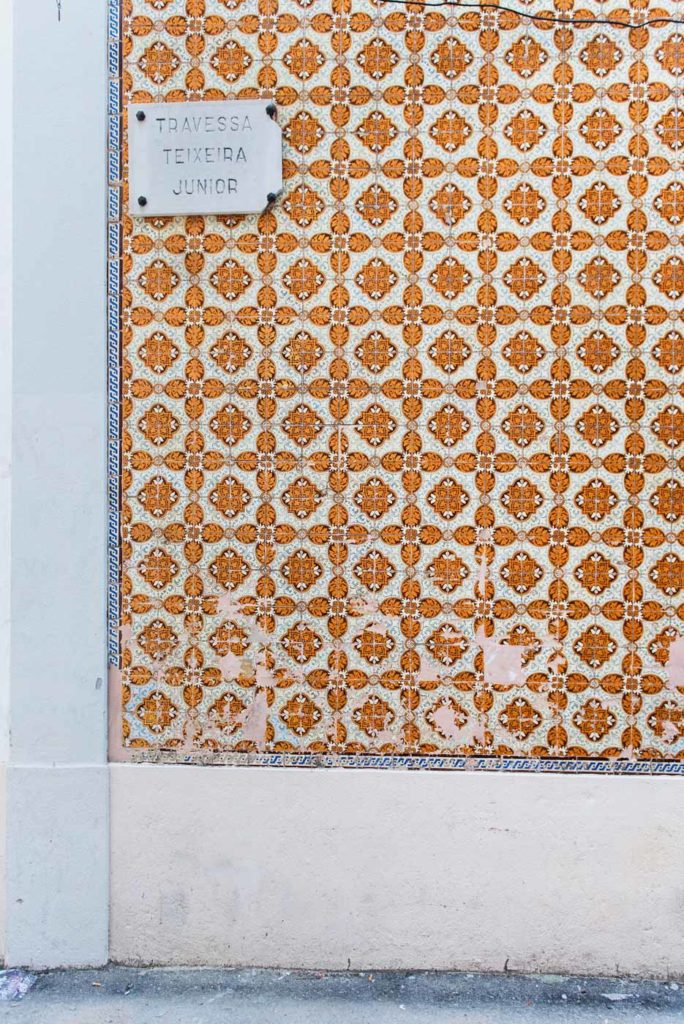
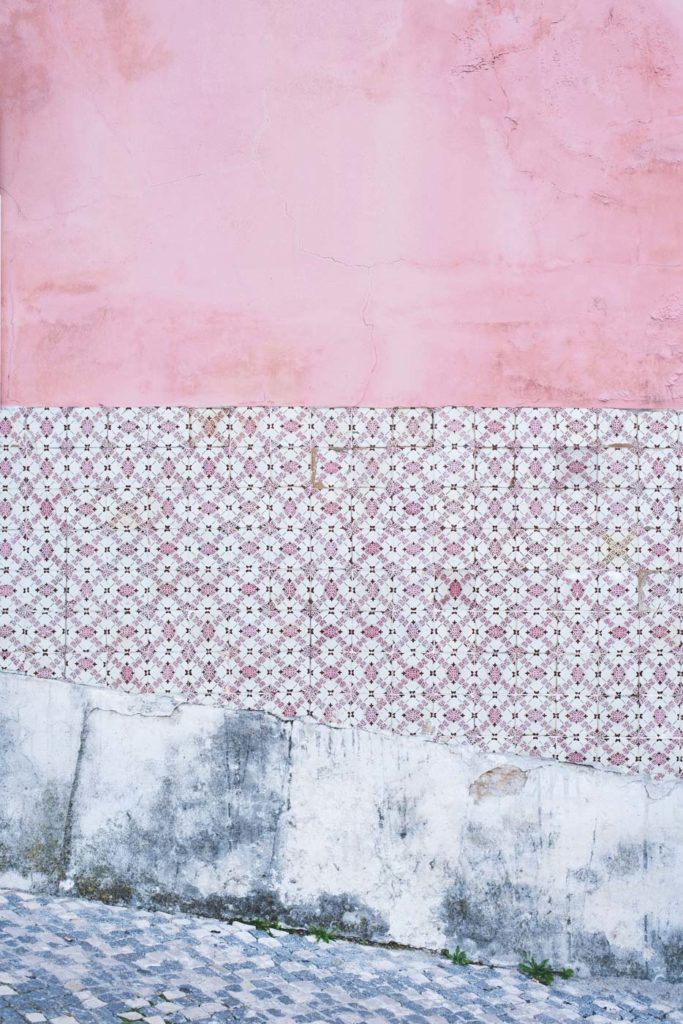
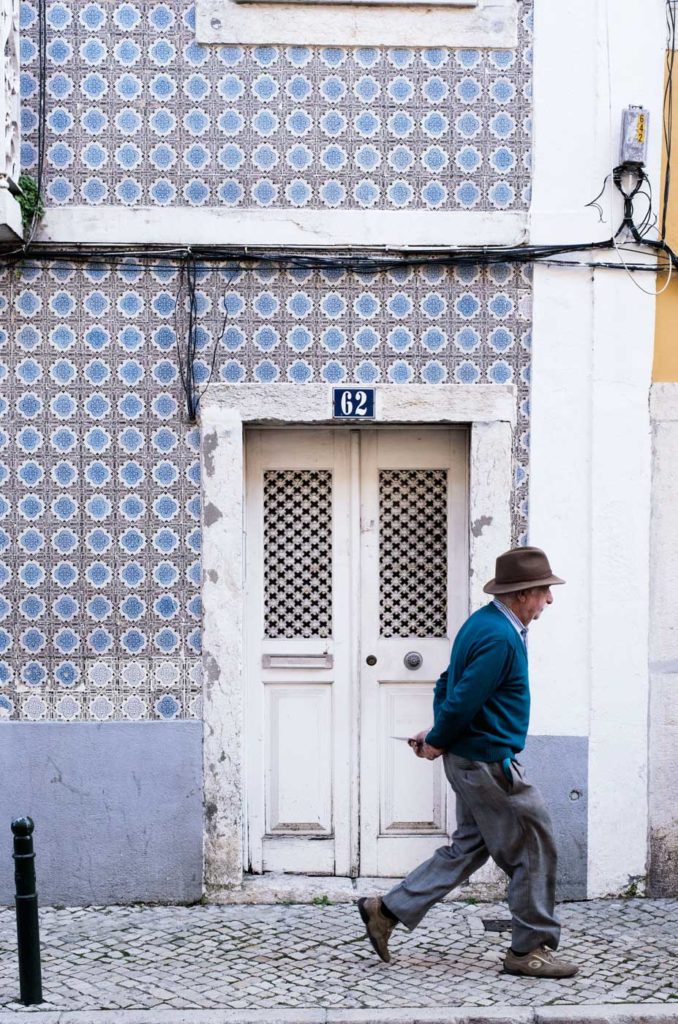
Upon arrival at the Tagus River’s edge, glimmering in the sunlight, seafood restaurants can be found bursting with fresh catches––plump oysters, baby pink shrimp, codfish in hundreds of guises.
Built on seven hills (“like Rome!” our favorite bartender exclaimed), Lisbon’s buildings spill out like a crayon box among the lush green land. From high up, the peach rooftops of the city seem endless, but there is an inexplicable intimacy about it. On our first afternoon in the Portuguese capital, we caught a tuk tuk straight from our hotel in the old town towards Bairro Alto. As we plummeted down a steep cobbled hill, our driver cheerily informed us that the vehicle had no breaks. Immediately afterwards, he pointed out a group of friends who had gathered outside a bakery eating crumbly pastry and drinking wine. “Really, Lisbon is not a city,” he said. “It is a village.”
Never shying from its shabby edges, Lisbon instead chooses to embrace them. Sun-faded materials hang in strings across narrow streets, while the weary patterned tiles of its homes are often stitched up with clashing colors, giving the whole place the look of a patchwork blanket. Hip new coffee shops have been built into tiny old houses. Age-old pastelerias––pastry shops––exist next to shiny concept stores and independent galleries.
Yet the constant charm is in echoes of the past. Lisbon somehow recalls days gone by, more colorful and dreamlike than the present. Perhaps that is what makes dining there so joyful. There are changes at every turn––locals plotting new projects, new menus, empty spaces to fill. Yet it all occurs behind the city’s chipped, charming facade, which beckons you to become a local, if even for a day.
—
Cervejaria Ramiro
If the queues snaking down the entire length of the street outside its entrance are any indication, Cervejaria Ramiro’s reputation as Lisbon’s best seafood restaurant is well founded. They do not take reservations, and are crammed full most nights. But Lisbon has a very laid back public drinking policy, so grab a bottle of red from a nearby shop or bar and enjoy the wait. Once inside, you’ll be led to a table by one of the playful waiters, who will slam down a basket of warm, crunchy bread glistening with butter. Ramiro is a no frills, strip-lit labyrinth cast over three floors, with seemingly endless tables full of loyal locals and hungry tourists. The atmosphere is authentic and relaxed, with all attention reserved for the freshest, most sumptuous seafood imaginable. The fish selection is marvellously surprising: rare, candy pink shrimp, sandy razor clams, portly crab and prickly crustaceans bursting with meat. The clams come swimming in garlicky butter, the oysters are fat and fresh, the wine is cheap, and most locals finish up their seafood feast with a hefty prego––a crusty, salty steak sandwich. When in Rome…
Av. Almirante Reis nº1 – H, 1150-007
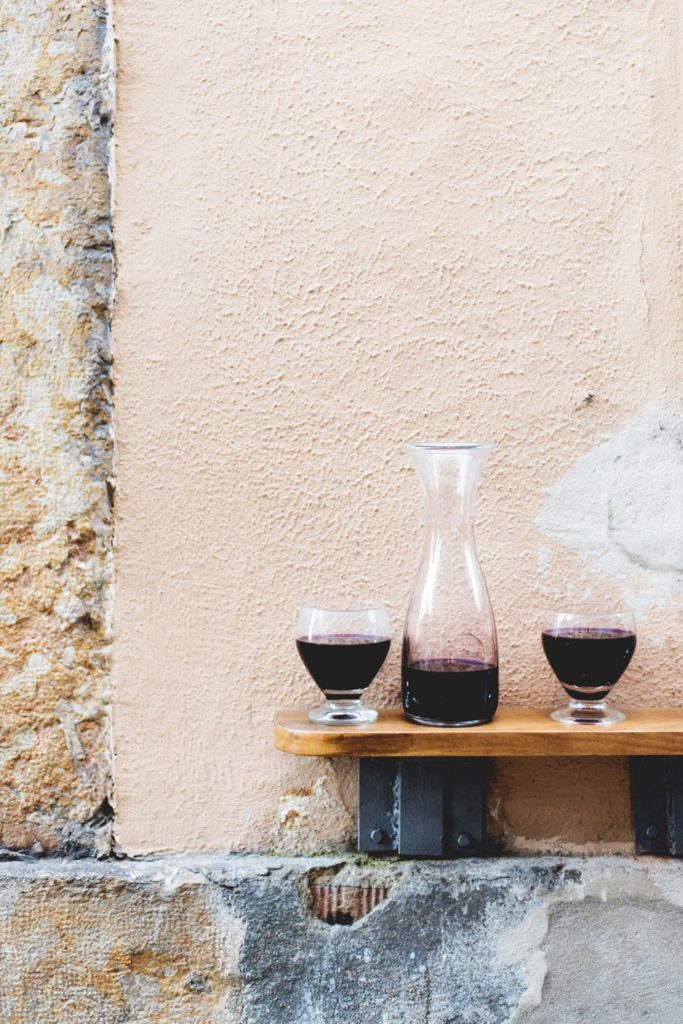
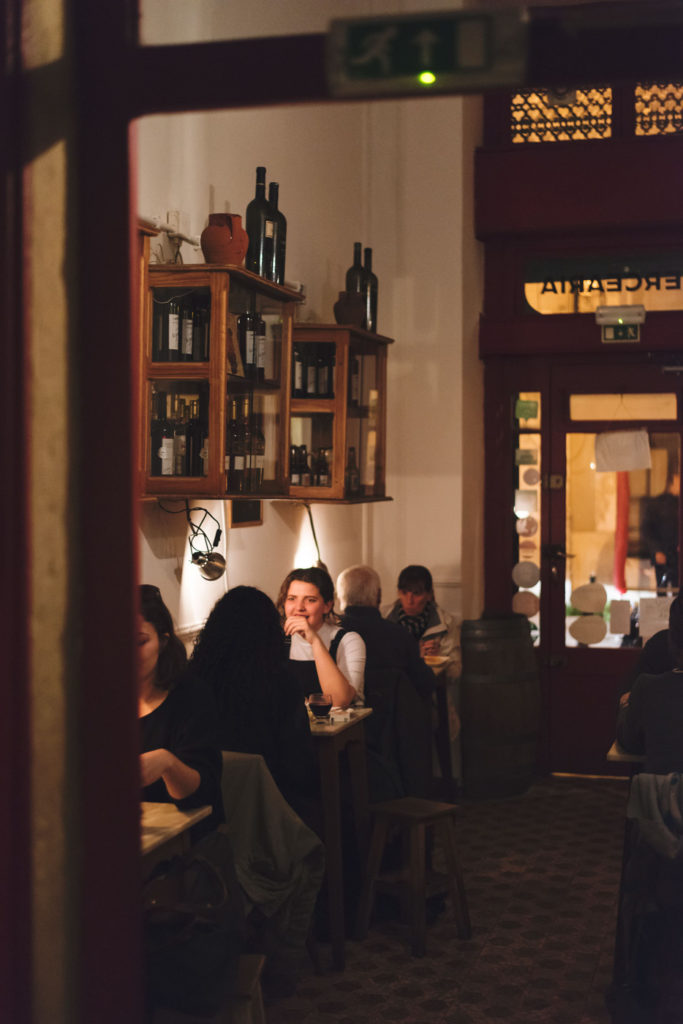
—
Taberna da Rua das Flores
Another of Lisbon’s greatest culinary treasures, Taberna da Rua das Flores does not accept bookings––which means arriving unfashionably early (around 6 p.m.) to secure a table. The narrow restaurant, warmed by rusted mirrors and candlelight, is like dining in the home of a beloved uncle who thinks you need fattening up. Chef George Mendes took over the place a couple of years ago, bringing experimental cooking to a traditional tavern. It is hard to imagine a menu that fuses cuisines as delicately as this. The list of shared plates is written on a blackboard, merging classic Portuguese recipes with carefully chosen Asian flavors. Zesty mackerel tartare, squid linguine with coconut milk and soft, charred-black pork filled our table alongside several carafes of silky, cheap red wine––sending hopes of normal conversation swirling down the antique plughole.
Rua das Flores 103, 1200-194
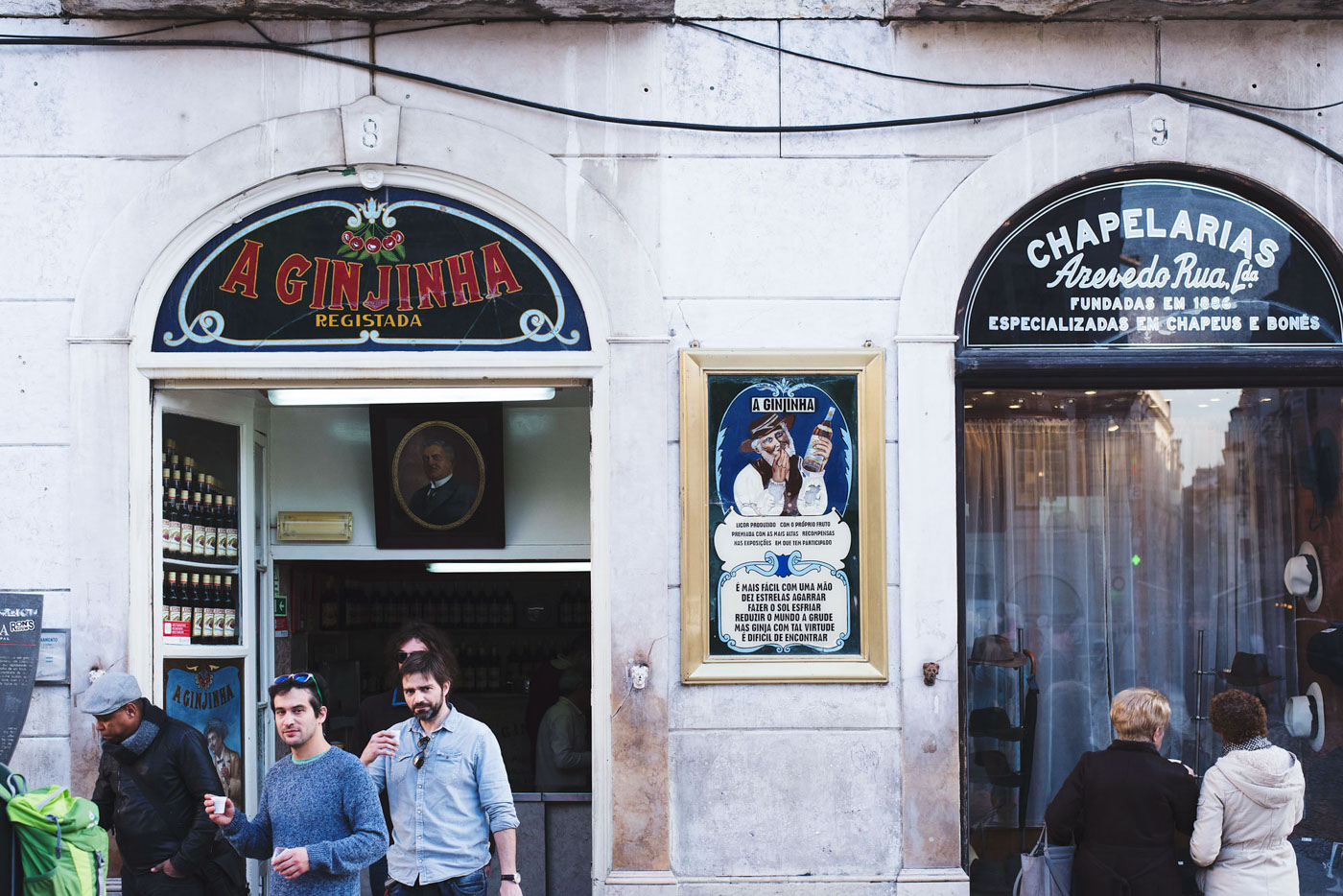
—
A Ginjinha
There is a little ritual in Lisbon––one so unpretentious and quietly decadent––that perfectly encapsulates the lively spirit of the place. Ginja is an eye-wateringly sweet liqueur made from wild cherries. It is the lifeblood of Lisbon, and there is no hour too early to grab a glass. Locals can be found leaning happily against the city’s crumbly tangerine walls around 10 a.m., welcoming the arrival of a new day with a cup of ‘Ginjinha,’ served in tiny glasses or cups made of dark chocolate. This hole in the wall bar has been obliging since 1890, nestled in the square of Praca dom Pedro. Though it has become a magnet for tourists, Lisbonites still adore it. Most of them visit every day, and share a raucous joke with the owner before taking their glass outside to enjoy a solitary moment of sweetness.
1100 026, Praça Dom Pedro IV 71
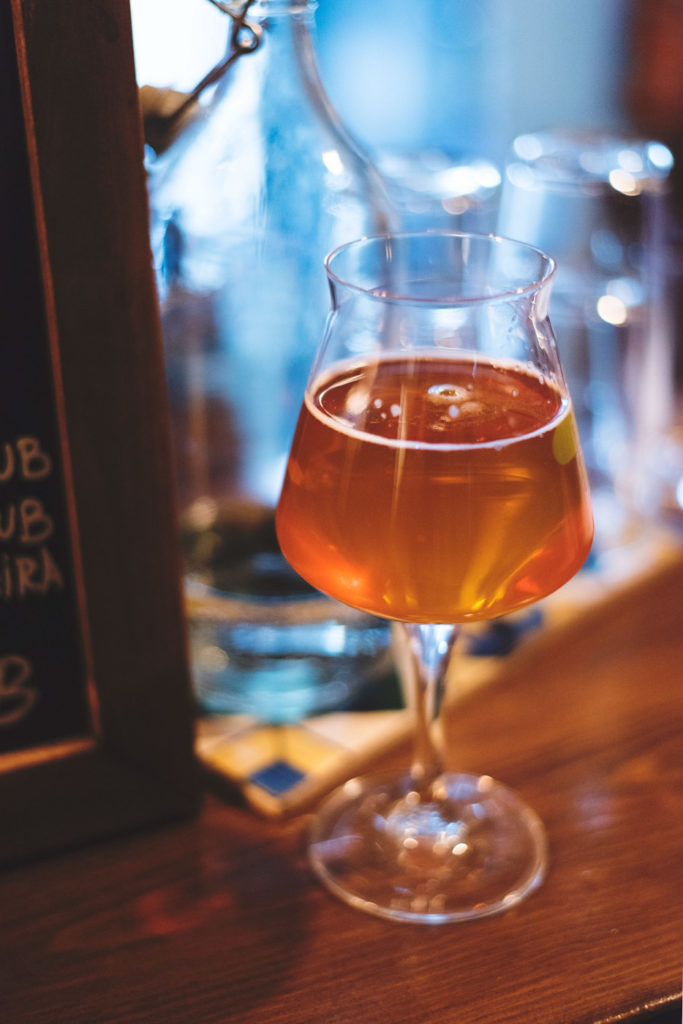

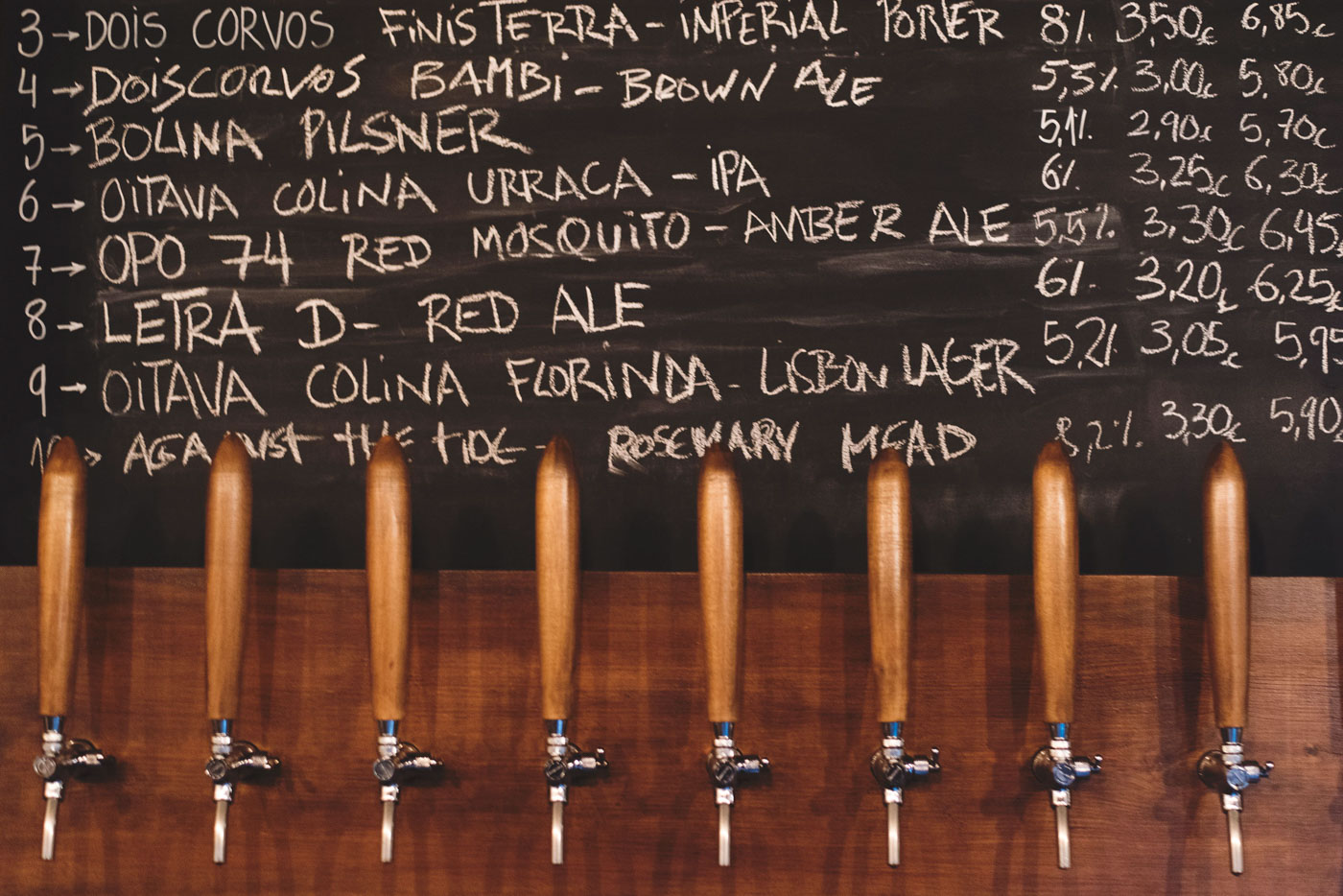
—
Duque BrewPub
There are few places more rewarding to wind up, after hiking what feels like an endless flight of steps, than a craft beer bar. The doors of this in-house brewing room are often propped open, with the towering machine left for all to see. A wooden bar is lined with glinting silver taps, with beers of the day etched in chalk above. The beers on offer are extensive; Portuguese ales, international craft beers and, of course, their own brews––which vary in hue from deep amber to sunny yellow. The wood-panelled room, replete with slightly unsettling oil paintings, is large enough to get pretty rowdy, but small enough to recall the working class bars that used to fill Lisbon, and are now thinning out.
Calçada do Duque 51, 1200-156
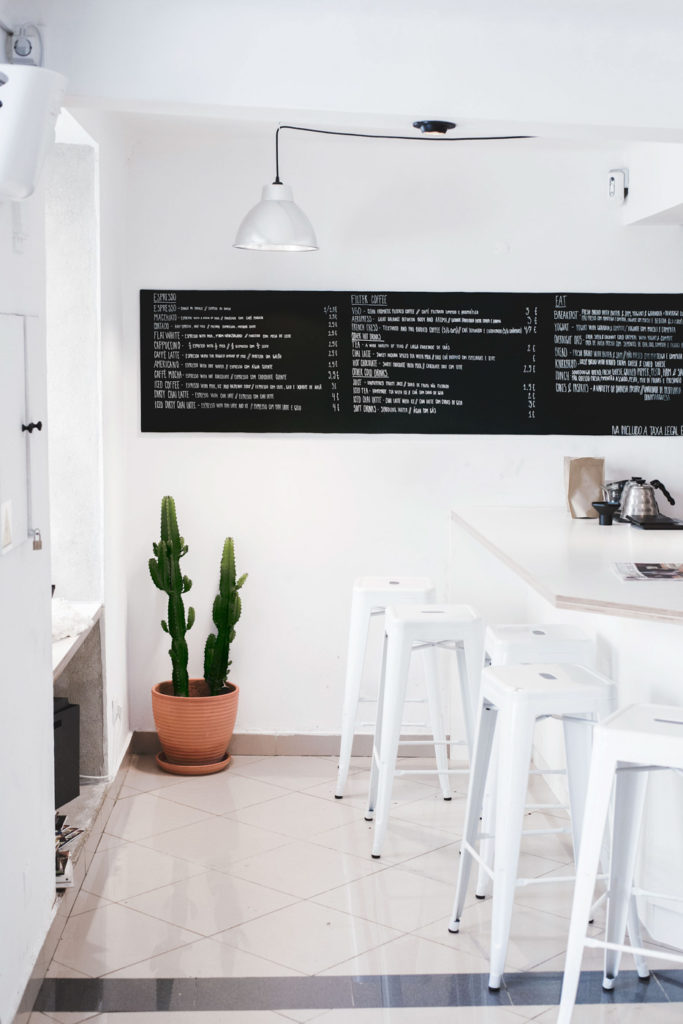
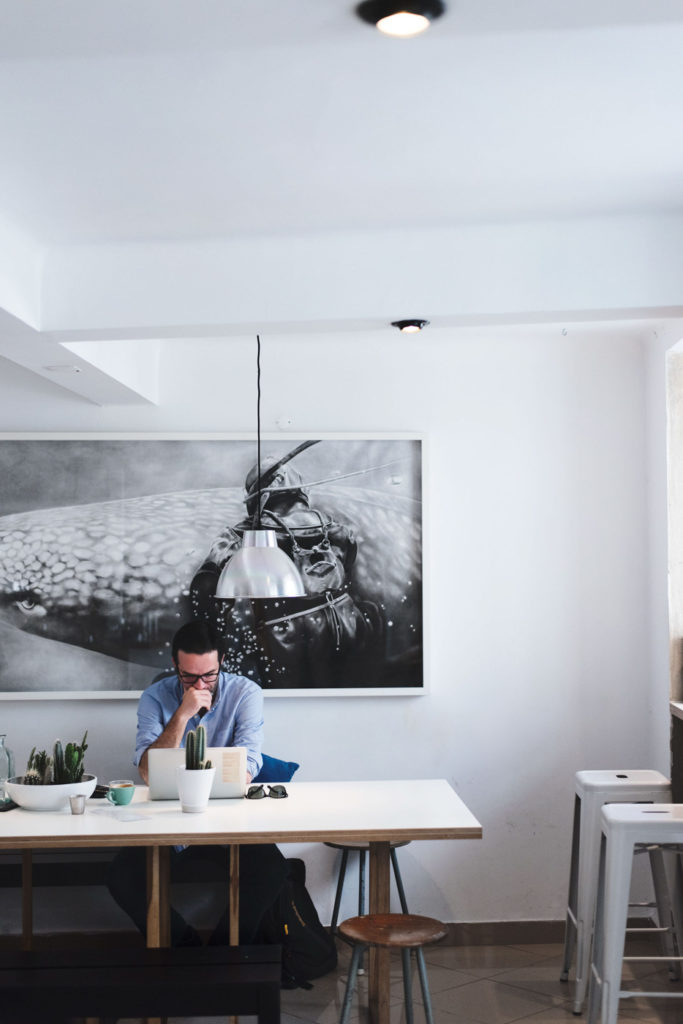
—
Copenhagen Coffee Lab
Lisbon is not short of places for coffee. From traditional wooden kiosks to slinky bars, there are few areas in which one couldn’t get their hands on a strong, bitter espresso, which locals drink like water. But Copenhagen Coffee Lab offers something different. The small café is tucked inside an old house the color of lemon meringue in the newly gentrified, ultra-bohemian district of Principe Real. It is as airy, whitewashed and Scandinavian as its name suggests, with young freelancers tapping away at their laptops in front of moody black and white photographs. The specialty coffee offering is extensive, peppered with interesting items like their ‘Dirty Chai,’ made with spices and a shot of espresso. Settle on one of lambswool rugs at the window seat and try the aeropress, bitter enough to add a kick, and so clear it lets the sunlight shine through.
R. Nova da Piedade 10, 1200-298
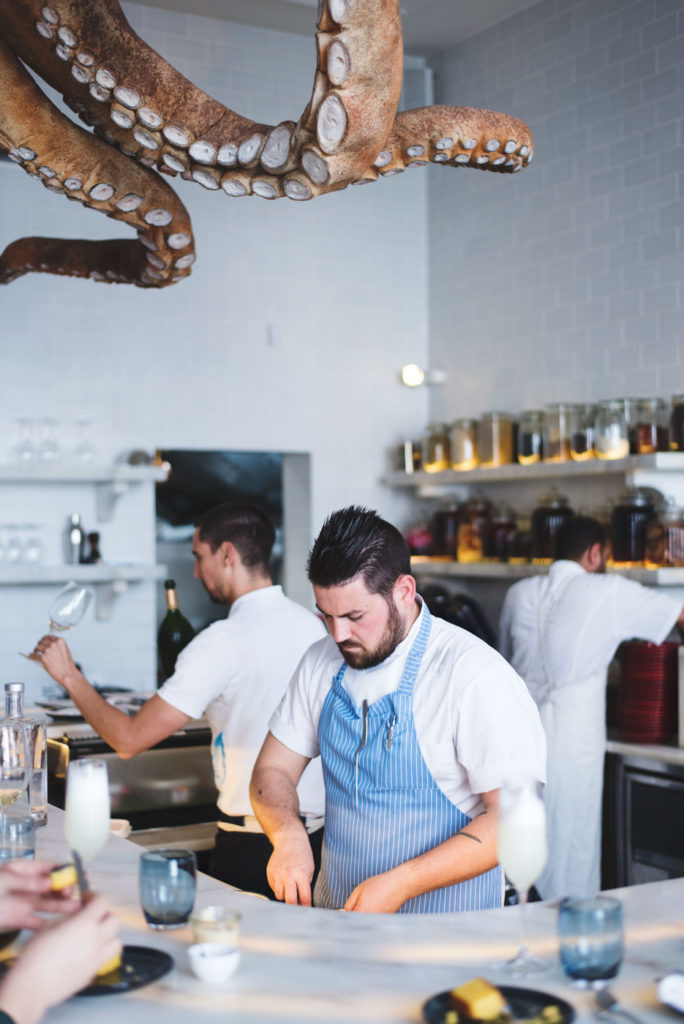


—
A Cevicherie
Also in Principe Real, among the cool concept stores and rainbow-tiled houses, is A Cevicherie, the work of Chef Kiko Martins. Diners sit at a bar, which wraps around a small open kitchen, sipping ice-cold pisco sours beneath the giant octopus sculpture that hangs overhead. The menu is a love note to Peruvian flavours, offering classic ceviches like seasonal white fish with pureed sweet potato and seaweed, alongside inventive varieties like tuna, foie gras and lychee with hazelnuts and beetroot. Being that Lisbon is famous for fish, each zesty, bracing dish on the menu is as unforgettably exquisite as the last.
R. Dom Pedro V 129, 1250-096
—
Mercado da Ribeira
After rumors of the council overhauling this historic indoor food market, Time Out took the reins of Mercado da Ribeira and transformed it into one of Lisbon’s most exhilarating food destinations, where the city’s exciting newcomers share the floor with traditional butchers, fishmongers and cheese sellers. This expansive, light-flooded atrium crawls with people every day, from families sharing heaving plates of clams with hunks of crusty bread to young couples plucking blood-red tuna sashimi and steaming cuttlefish croquettes extinguished with Madeira wine. If you want a crystal clear picture of Lisbon’s gastronomy––its past and its future––spend an afternoon being swallowed up in the delicious chaos of this market.
Av. 24 de Julho 49
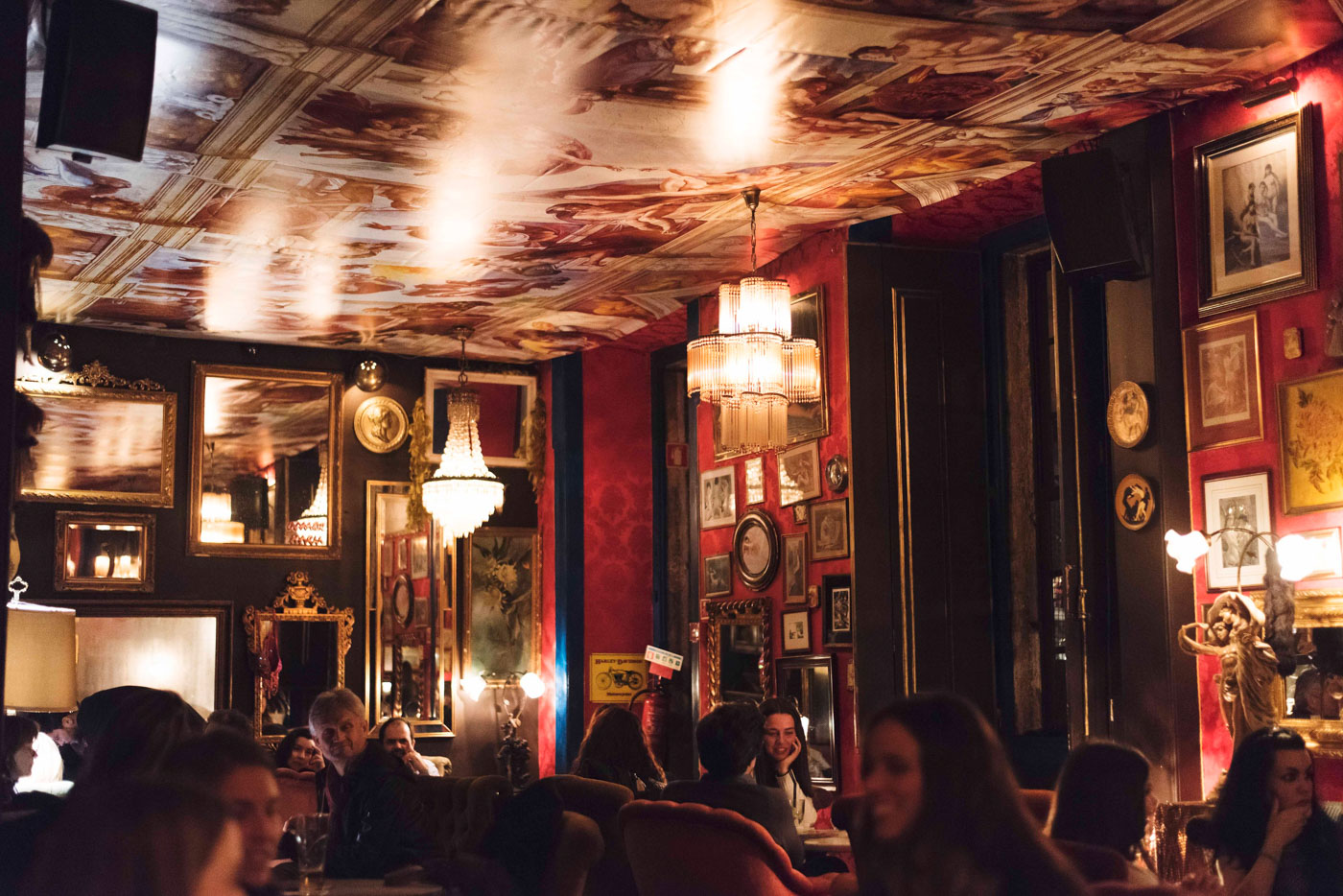
—
Pensão Amor
Rua Nova do Carvalho was once Lisbon’s red light district, attracting wide-eyed sailors who moored their boats on the river Tangus. Things have become a little more wholesome in recent times, and it is now the site of Lisbon’s most bustling nightlife. But it’s still possible to visit old brothels and get a whiff of the area’s lascivious past. Pensão Amor is a cocktail bar spread over the top floor of an 18th century house, which once served as a pension with rooms rented by the hour. Plastering the walls of the staircase are old peep show posters and evidence of the burlesque shows that once played there. The bar grabs its seedy past by the glacier cherries, serving up classic cocktails to hedonistic punters lounging on leopard-print velvet armchairs, all beneath a ceiling frescoed with pixilated scenes from Michelangelo’s Sistine Chapel. The room blazes with red light, decorated with cascading drapes and fleshy paintings. But still, it’s comforting, welcoming––and eternally difficult to leave.
R. Alecrim 19
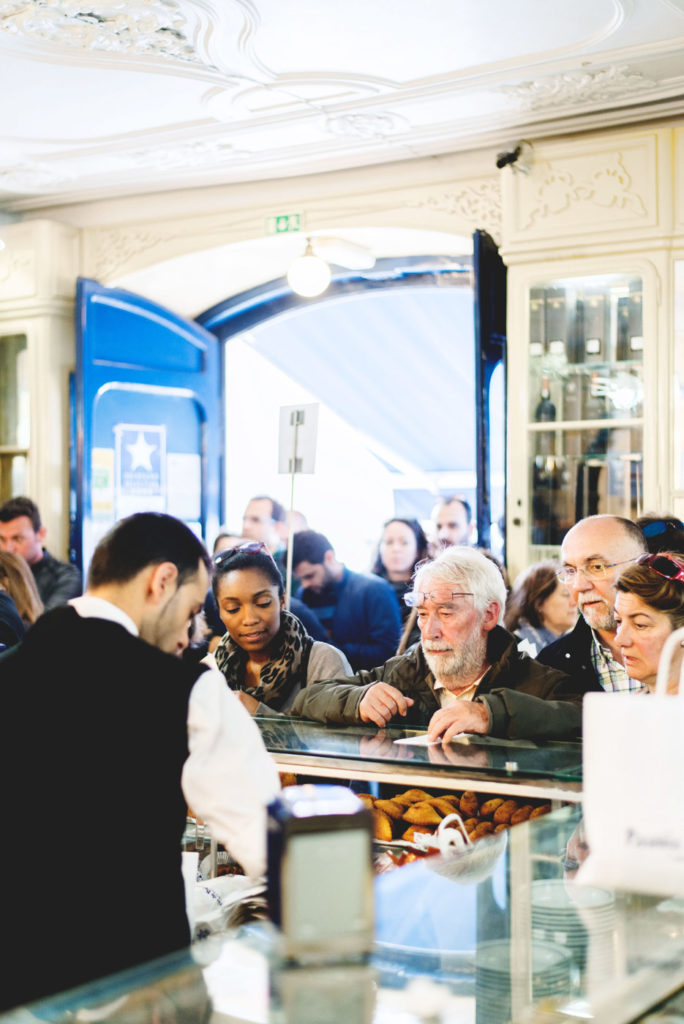
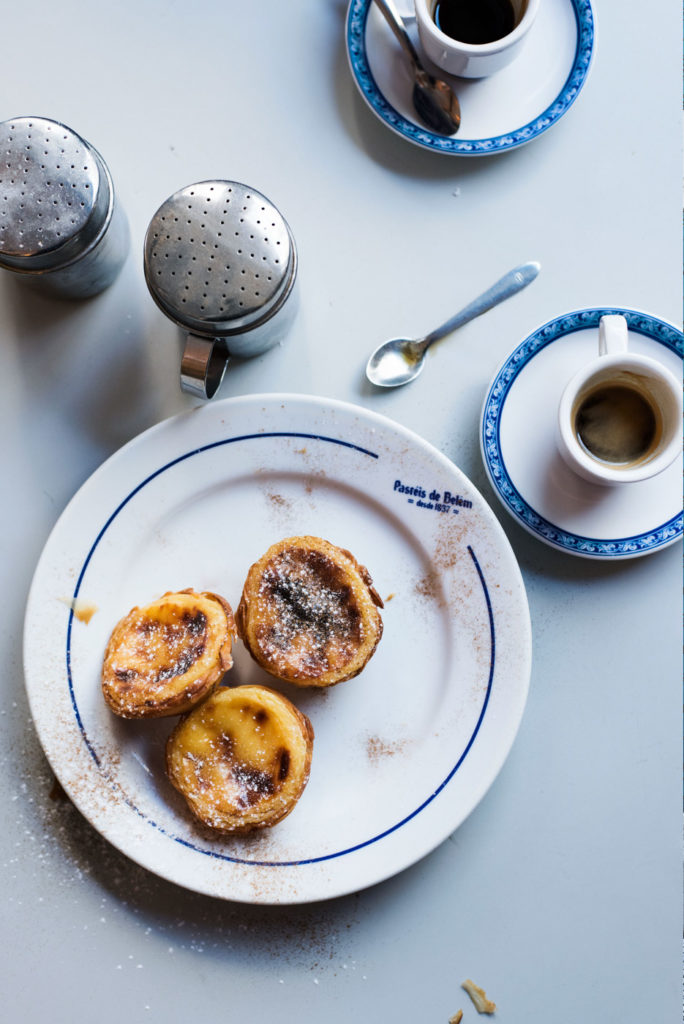
—
Pasteis de Belem
These are the archetypal pastel da nata––the custard tart which all custard tarts aspire to be. Though the city is brimming with this Portuguese specialty, Pasteis de Belem is usually the first stop on any tart pilgrimage. Since setting up shop on a gusty waterfront in 1837, they have been churning out thousands of their original egg tarts to streams of visitors every day. There are always two long queues to join outside the shop, one for takeaway snacks and one for a table. To get the full experience, join the line for a table, shuffle through a couple of sprawling, gilded rooms, passing the glass-fronted kitchen, and catch a glimpse of the bakers piping creamy custard into soft, flakey shells of pastry. Upon reaching the front of the queue, a man in a shirt and tie points customers in the direction of an empty table, where a waiter will be clearing crumbs of pastry from the wood. Order a couple of custard tarts each, and take a moment to enjoy the smooth, warm filling with its subtle pocks of singed sugar on the surface. The crumbly base is made up of many thin layers, like a fine tissue wrapping paper you never want to throw away. Silver shakers of cinnamon and powdered sugar sit on the table, completing the picture of this iconic Portuguese delicacy.
R. Belém, 1300-085

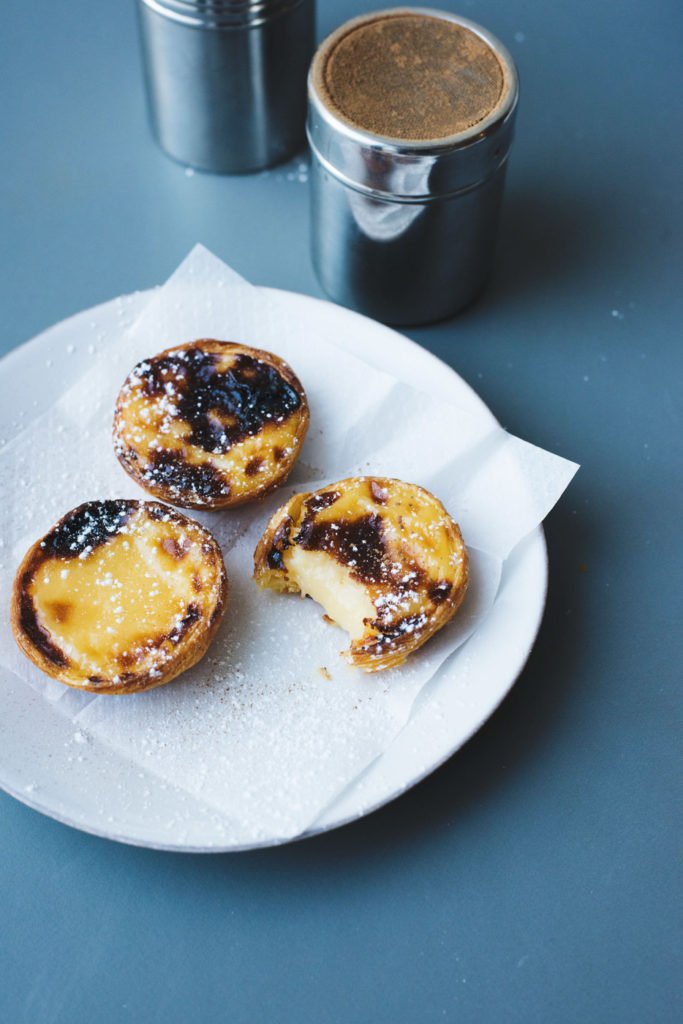
—
Manteigaria
Once you’ve tried Pasteis de Belem––which most locals would call the best custard tart in Lisbon––head straight to Manteigaria to try another recipe. Theirs are a little sweeter with a slightly lighter, creamier filling and a firmer pastry. Rowdy locals flock to the glass counter and knock back coffee with a couple of tarts, basking in guiltless pleasure.
Rua do Loreto, 2, Chiado
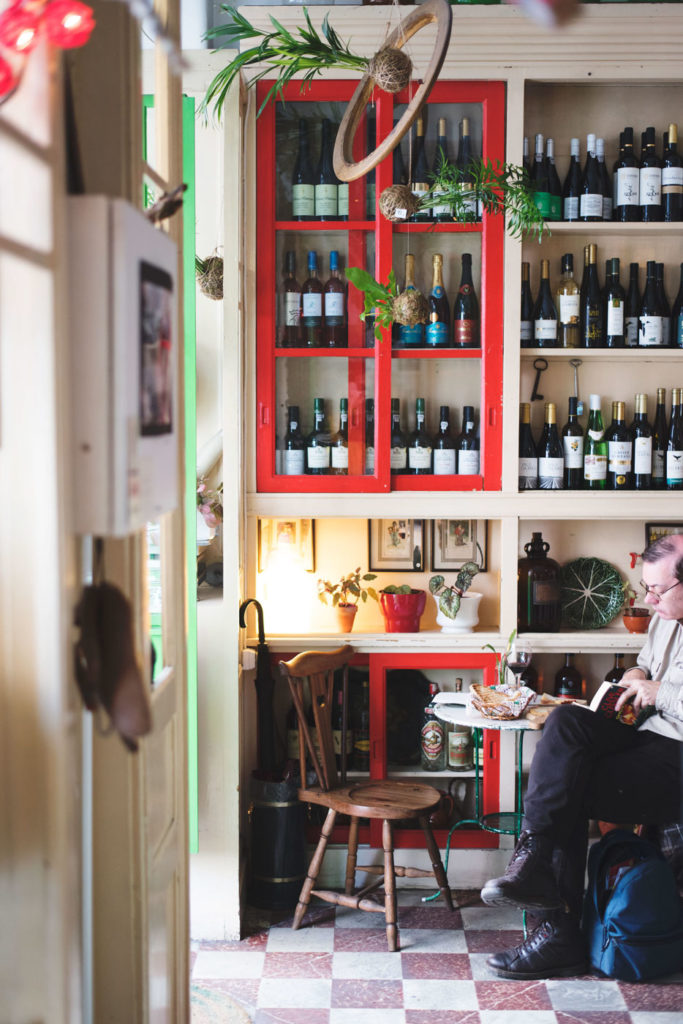
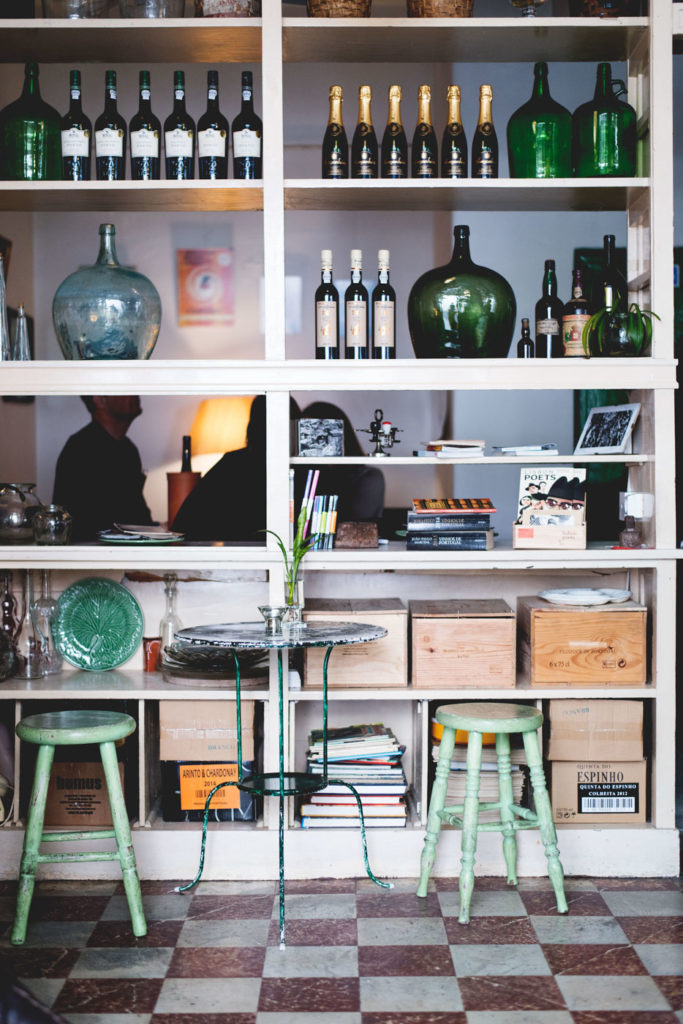
—
Graça do Vinho
We came across this wine bar by chance, wandering through the sleepy district of Graça. The owner sat with his newspaper and a glass of wine the color of rubies, his chair propped at the tall green window, which had been flung open. It was late afternoon and we had a few hours to spare, so we joined him. It soon became a ritual of the trip; early evenings spent eating salty anchovies drizzled with olive oil and chunks of crumbly cheese, making our way through the lovingly compiled list of local wines. This former pharmacy is stocked with Portuguese produce, from oils and smoked meats to tinned fish. Inside, old globes and green glass bottles line the shelves, and the soft candlelight casts an alluring glow onto the street outside.
Calçada da Graça 10





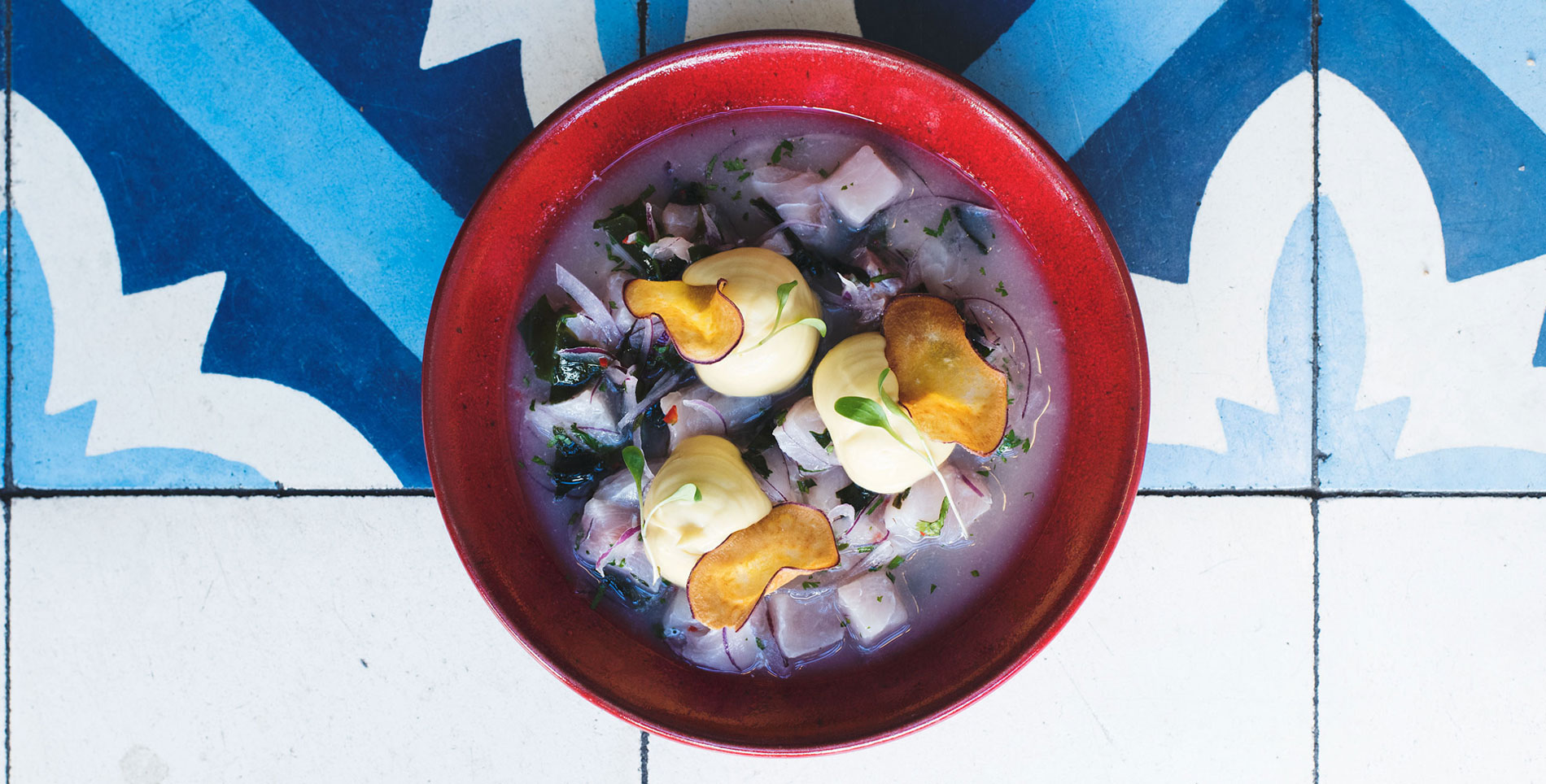

Our comments section is for members only.
Join today to gain exclusive access.